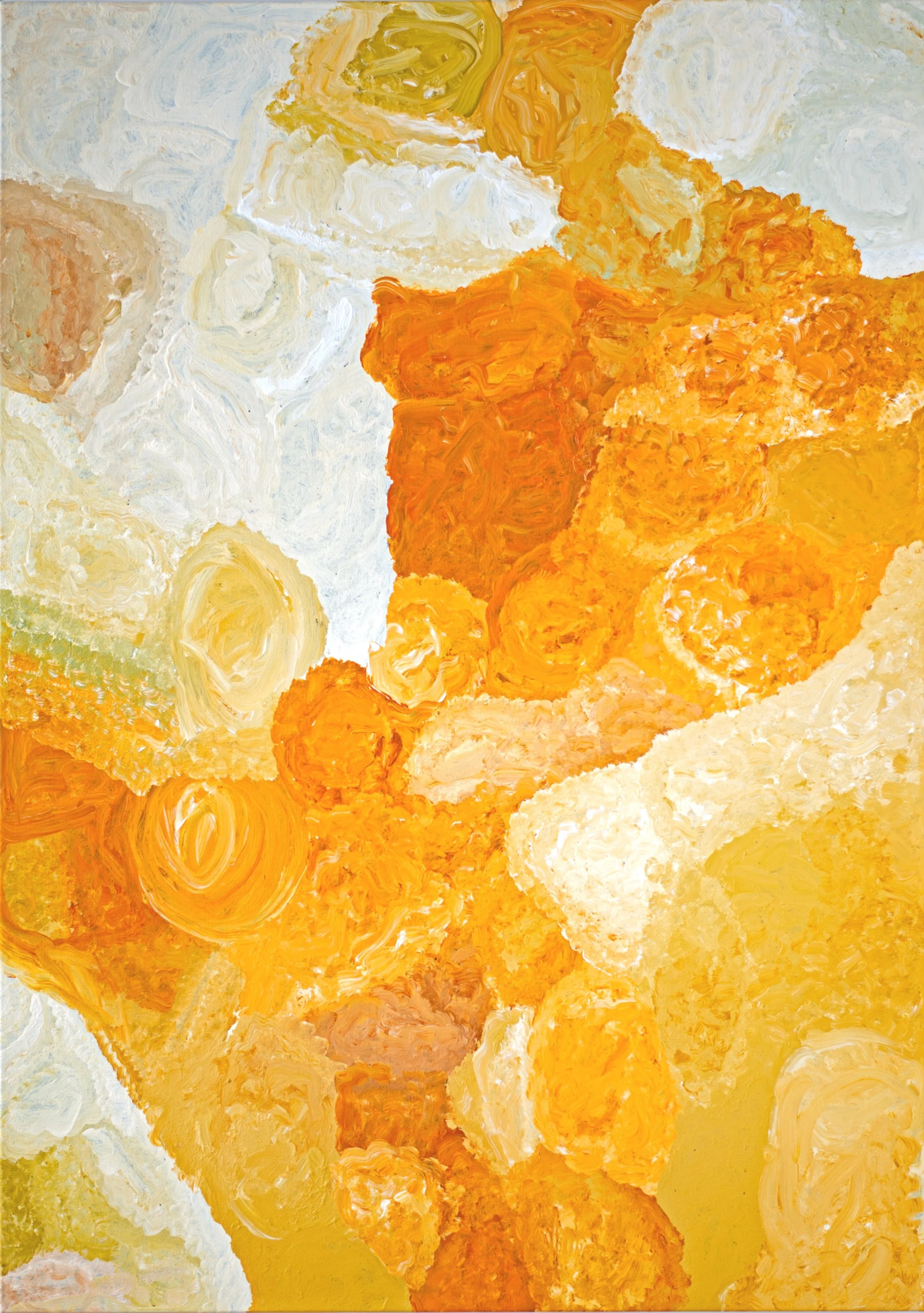Bugai Whyoulter (1939) - Parnngurr - 106 x 152 cm - 24-580 (sold)
Bugai Whyoulter (1939) - Parnngurr - 106 x 152 cm - 24-580 (sold)
Artiste : Bugai Whyoulter (1939)
Titre de l'œuvre : Parnngurr
Format : 106 x 152 cm
Provenance et certificat : centre d'art aborigène de Martumili
Référence de cette peinture : 24-580
Demander le prix de l'œuvre / Enquiry
Explications pour cette œuvre :
"We were climbing Parnngurr hill; we were frightened. Kartiya (Europeans) would walk around, trying to catch Martu people. We would run up the hill and hide. We watched them catch people. We were eating flour that white people gave us. It was horrible.
From [Parnngurr rockhole], we got in the truck and went with the white people to Jigalong. Kumpaya [Girgirba], Jakayu [Biljabu] and Ngamaru [Bidu], we were all on top of the hill looking at the white people."
- Bugai Whyoulter
Parnngurr rockhole is located 370km east of Newman. This site lies within Bugai’s ngurra (home Country, camp), the area which she knew intimately and travelled extensively with her family in her youth. For many Martu, including Bugai, Parnngurr also signifies the location at which their nomadic bush life came to an end. Poignantly described here by Bugai, it was here that a group of 29 Martu were picked up by the Native Welfare Department to be taken to Jigalong Mission in 1963. Collectively the group had come to the decision to move to the mission as a result of an extended drought, which had caused a scarcity in food and water resources.
The group also wanted to join their families, who had already moved to Jigalong.
At the junction of three linguistic groups; Manyjilyjarra, Kartujarra, and Warnman, Parnngurr rockhole was a critical and permanent source of water during the pujiman (traditional, desert born) era, supporting many ritual large gatherings. During this nomadic period families stopped and camped here depending on the seasonal availability of water and the corresponding cycles of plant and animal life on which hunting and gathering bush tucker was reliant. At Parnngurr and other similarly important camp sites families would meet for a time before moving to their next destination. Parnngurr rockhole and its surrounds are physically dominated by distinctively red tali (sandhills), covered sparingly with spinifex and low lying shrub.
Parnngurr community, just north of Parnngurr rockhole, was created during the Return to Country movement of the 1980s, coinciding with the recognition of Aboriginal land rights and native title. The community was named aer its’ original primary water source. Until recently the community was widely known as Coon Creek, aer the European name for the ephemeral creek running alongside the community.
© Photo Aboriginal Signature Estrangin Gallery, and text with the courtesy of the Artist and Martumili Arts

